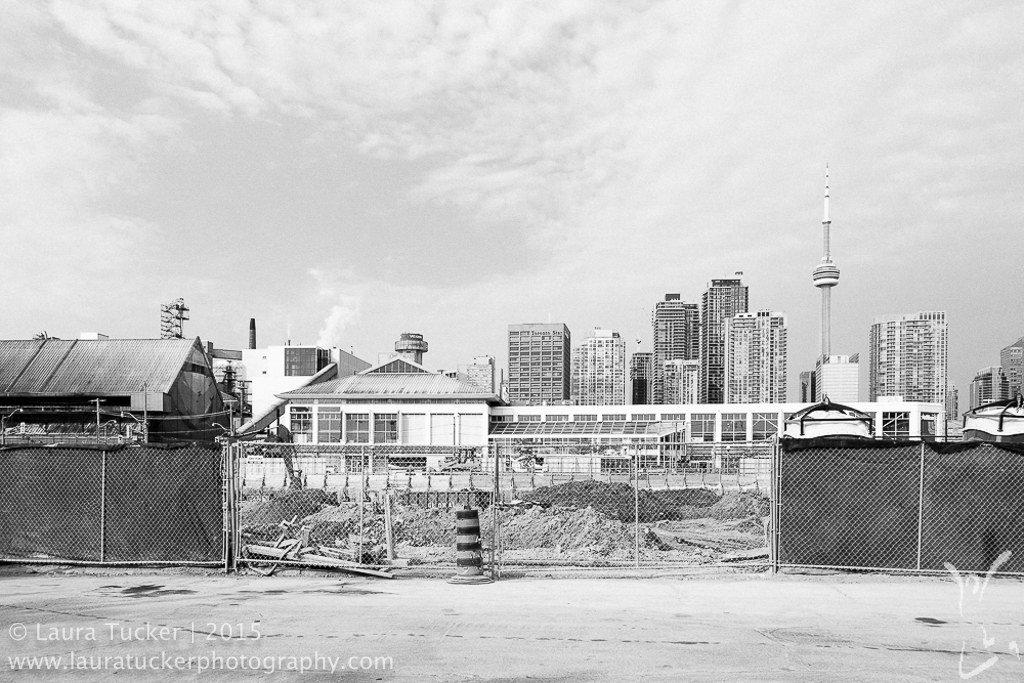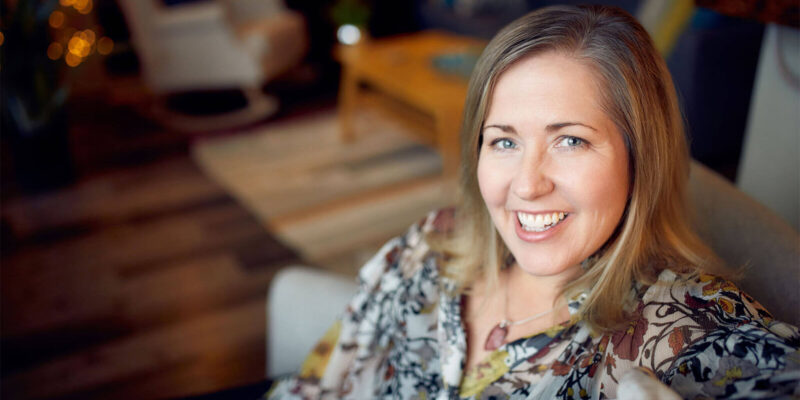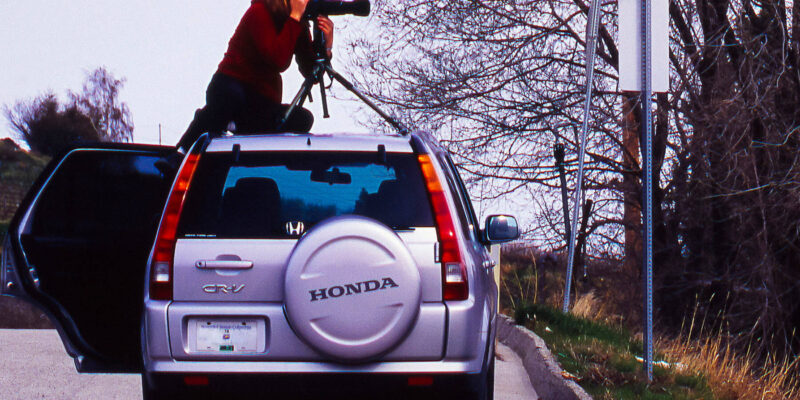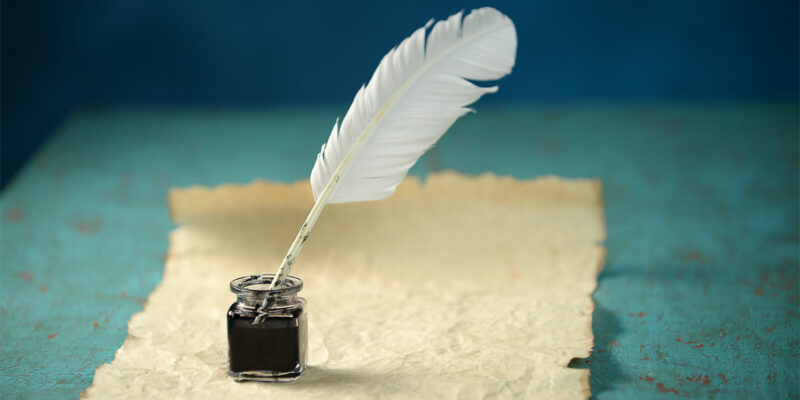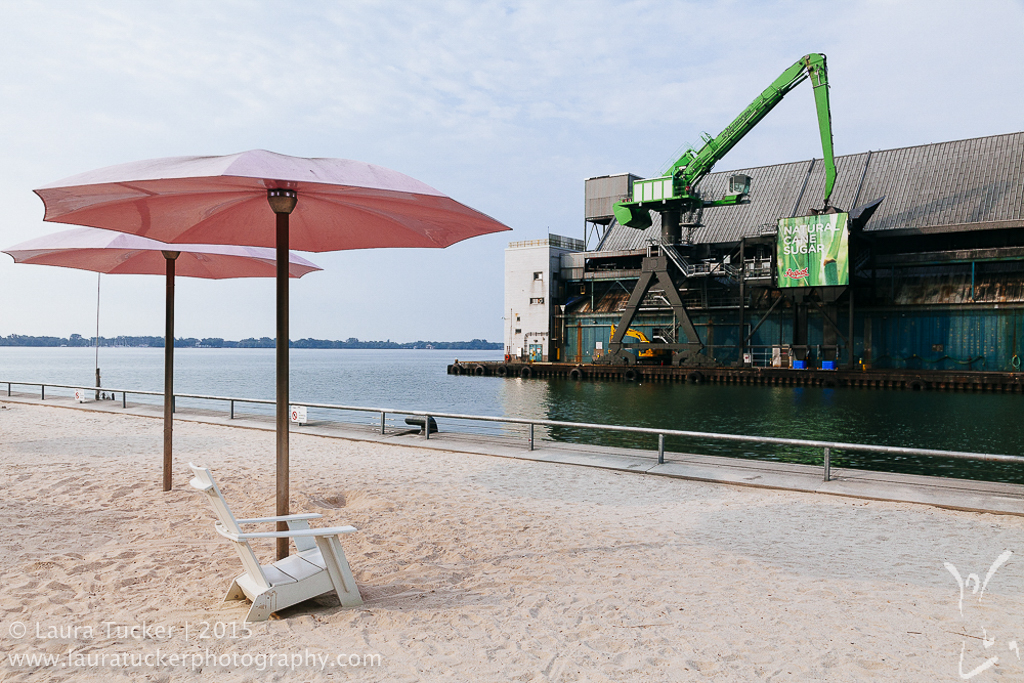
I took some time this morning to catch up on some of my photography of the last several weeks. It had been a while since I played with images and I had an accumulation of portraits for an upcoming project and some street photography I had squeezed in while driving along the Toronto waterfront.
These images weren’t my usual attempts to use my lens to carve serene images from the landscape of the bustling city. I had found a lucky parking spot close to Sugar Beach one of my new favourite spots in Toronto. (When I say new, I mean new to me. It didn’t exist when I moved away in 2005!) I remember being disappointed at all the construction in the area when I got out of my car. It was morning and the light was good, so I gave myself the instruction, “Don’t try to be perfect, just shoot what you see.”
Sugar Beach is home to the formerly controversial pink umbrellas installed on a man-made beach adjacent to the Redpath sugar refinery on Queen’s Quay. Criticism of the cost of these umbrellas dominated the headlines during a slow news week last summer leading up to the mayoral election in Toronto. To me, the umbrellas represent the best of urban art and planning. Practical and pretty, they create a vibrant public space where none existed before.
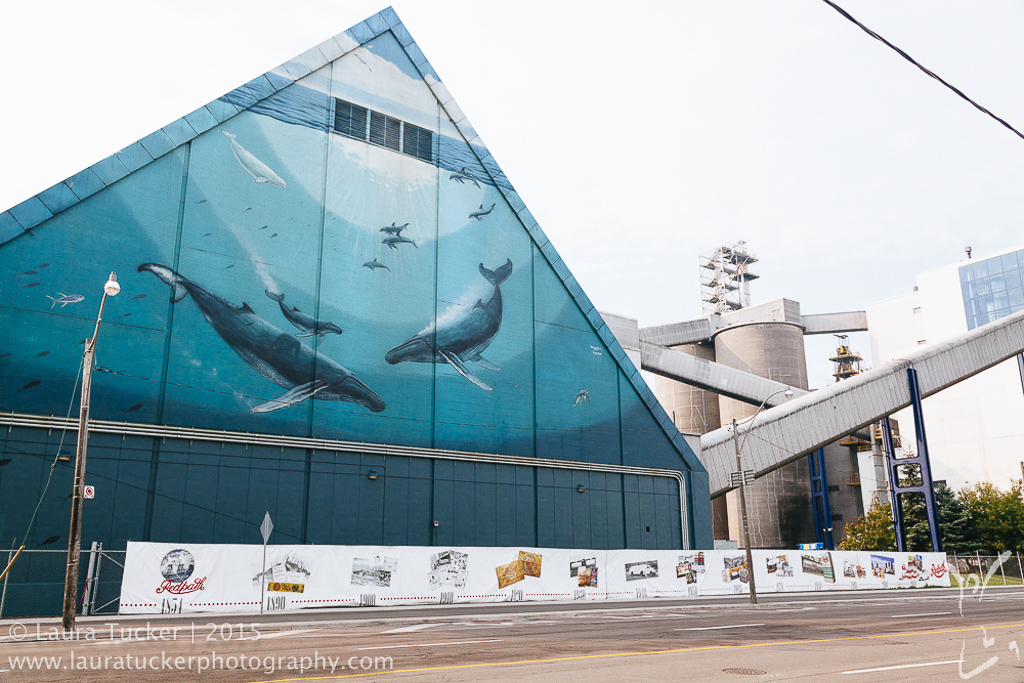
My second photo site was just around the corner at the side of the refinery that faces the street. A massive mural of humpback whales by the renowned marine life artist Wyland covers the entire north end of the “sugar shed”, where sugar off-loaded from the ships is stock-piled before it is refined. The mural is dated 1997. Despite my life-long affinity for humpback whales, this was my first time to include it in my photography.
My original intent at my computer this morning was to find something in my batch of photos to post to Instagram as I hadn’t posted all week. As I filtered through them and made my adjustments, I realized I was drawn into these images in a way I hadn’t expected. There had to be a reason. I cleared my mind to make room for the answer to come, and it did. The reason is juxtaposition.
The definition of juxtaposition is “the fact of two things being seen or placed close together with contrasting effect.” The example given in every dictionary source I found was “the juxtaposition of these two images.” That’s not what I’m referring to. It’s the juxtaposition within each of these images that makes them compelling.
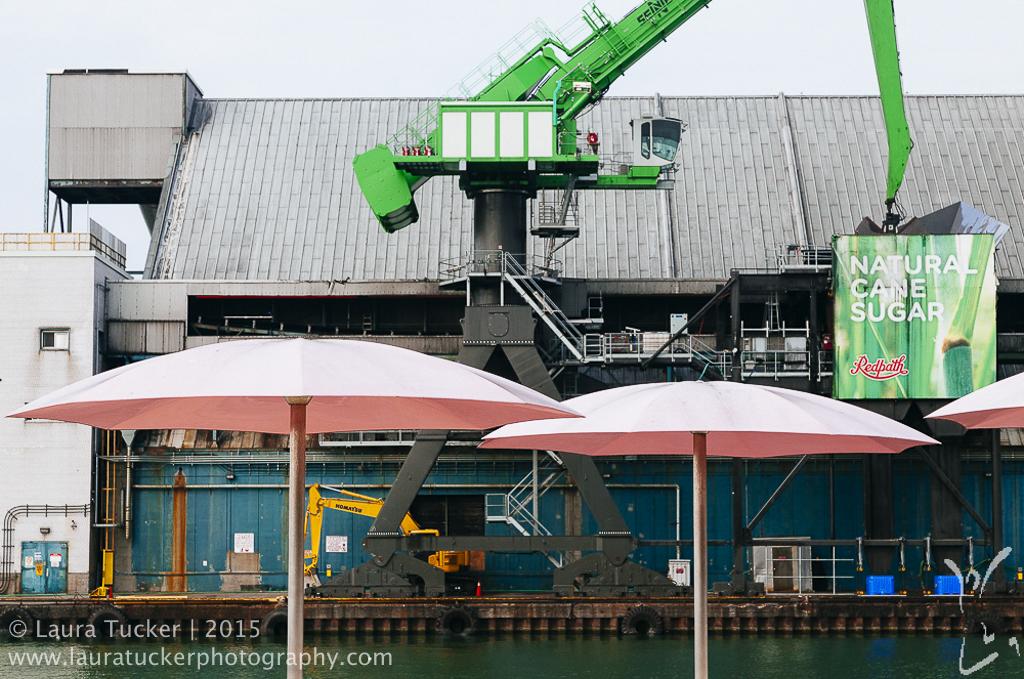
In the image of Sugar Beach, the candy-cotton pink umbrellas are silent sentinels on a beach, standing in contrast to a massive industrial site. At the edges of the day, it’s quiet, but you can tell by the many footprints in the sand that this is a well-used place.
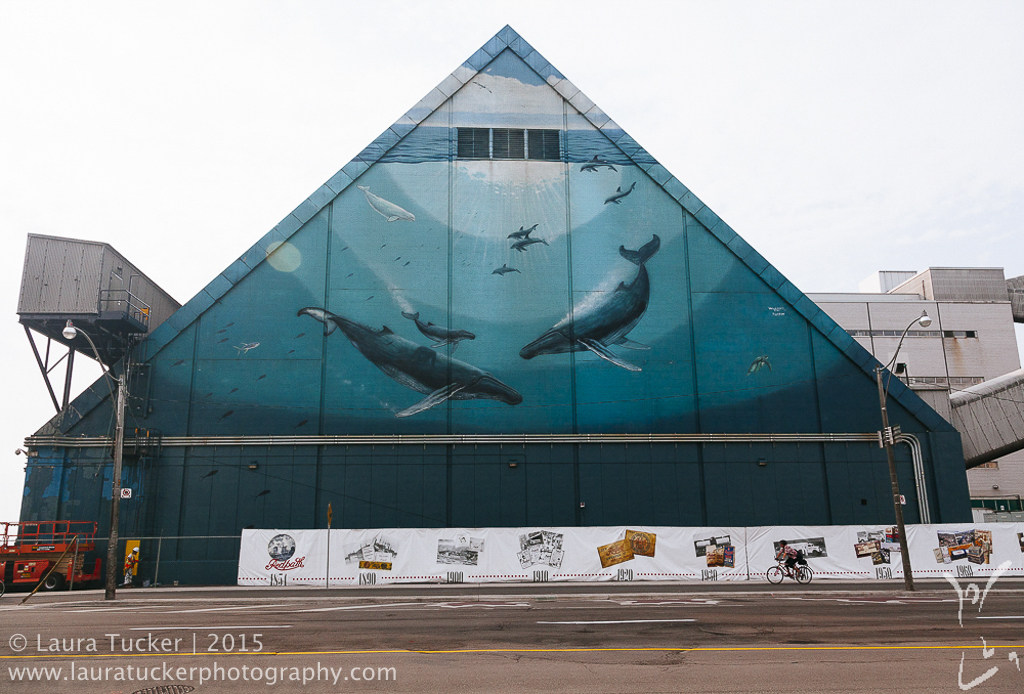
The images of the mural are filled with examples of juxtaposition. The contrast of art and industry is evident. There are no humpback whales in Lake Ontario, and there is nothing natural or pristine about the refinement of sugar. In one of the images, a male construction worker is highlighted by the yellow door behind him as a female cyclist enters the frame.
Although we notice these things consciously when we make the effort, our unconscious mind is constantly scanning our environment for comparison and contrast. Moments in our experience that provide the greatest contrast get noticed. The larger the contrast, the more profound and provocative the memory, image or story.
We love to hear stories of a hero or heroine whose journey takes them from the pit of human experience to the peak. There are many examples in today’s culture of formerly homeless millionaires. These stories are leveraged to inspire others to rise up and meet their own challenges. This archetypal story always has a slayed dragon in one form or another.
The reverse is also true in stories of human tragedy. the most evocative images and compelling stories resonate because of the contrast of a beautiful moment suddenly turned dark, or the loss or death of innocence. The entire connected world saw an example of this in recent weeks when the migrant crisis was brought to the forefront of human consciousness by a photograph of young Alan Kurdi’s lifeless body on a Turkish beach. The contrast was too much to bear. It interrupted us from the focus on our own challenges, measly in comparison.
Depending on the subject, images and stories of juxtaposition can be an inspiration, a wake-up call or simply pleasing to the mind. Even some benign images from the Toronto waterfront can provoke thought and reflection, two of the characteristics that separate us from other majestic beings on our planet like the humpbacks in the mural. This is the power of our unique creativity. The way each of us sees the world shapes our experience during every waking moment. This is why I believe using our creativity is so important. We can be participants in the world, but also create the world around us.
I’d love to hear from you in the comments below how you use your creative gifts. In other words, how do you “shoot what you see”?
